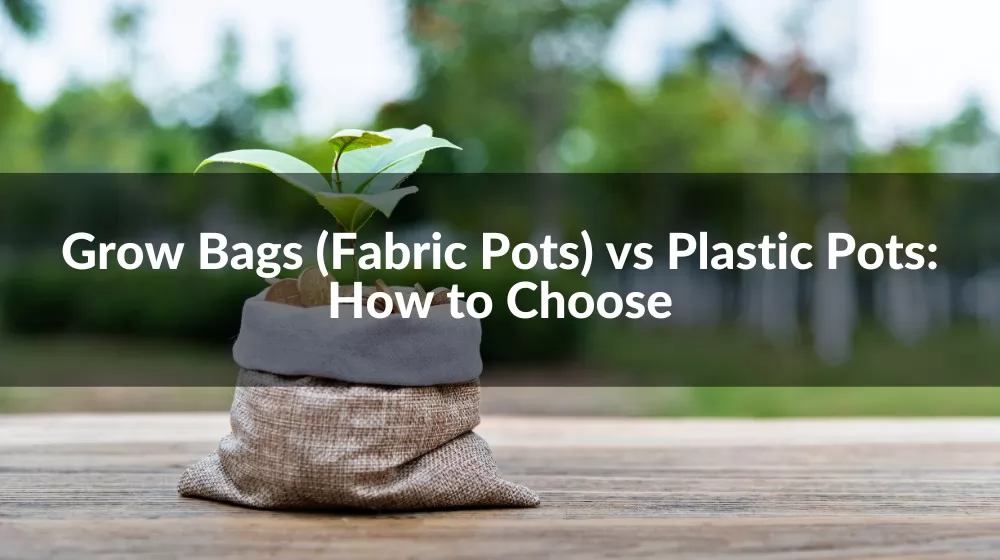
In the realm of modern gardening, the choice between grow bags (fabric pots) and plastic pots is a crucial decision for garden enthusiasts and professionals alike. This comprehensive guide delves into the nuances of both options, exploring the advantages and challenges they present. From the enhanced root health provided by grow bags to the durability of plastic pots, we uncover the science and practicalities behind each type. Join us as we navigate through this green journey, helping you make informed decisions for your gardening needs.
Grow bags, increasingly recognized in the world of modern gardening, offer a smart, efficient, and versatile alternative to traditional planting methods. Let's delve into what makes these fabric pots stand out in the gardening community.
At their core, grow bags are flexible fabric containers used for growing plants. They are crafted from breathable, often recycled materials like felt or other fabric composites. This design promotes healthy root growth by allowing air to penetrate the pot, leading to "air pruning" – a process that encourages more fibrous, branched root structures instead of the circular root pattern often seen in rigid plastic pots.
One of the primary advantages of grow bags is their ability to regulate temperature. Unlike plastic pots, which can heat up significantly under direct sunlight, grow bags dissipate heat through their fabric, keeping the soil at a more consistent temperature. This feature is particularly beneficial during those scorching summer months, making them a go-to choice for gardeners who want to protect their plants from heat stress.
Moreover, grow bags are celebrated for their portability. Lightweight and often equipped with handles, they can be easily moved or rearranged to suit the changing needs of a garden or growing space. This mobility is not just a convenience; it also empowers gardeners to optimize their plants' exposure to sunlight and adjust for seasonal changes.
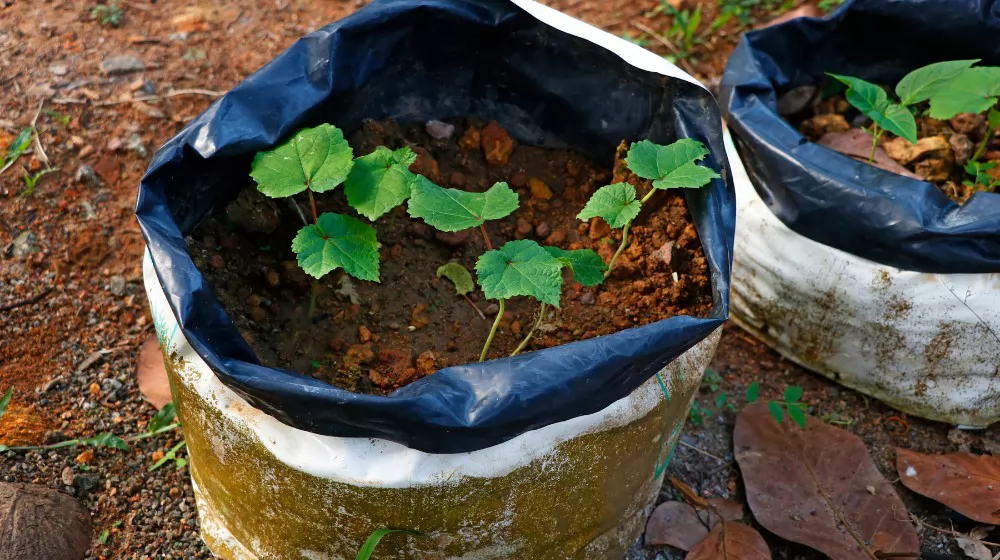
While grow bags have gained significant popularity among gardening enthusiasts, it's crucial to weigh their pros and cons to understand their suitability for your gardening needs. Let's take a closer look at the advantages and limitations of these fabric pots.
Enhanced Root Health: The breathable fabric of grow bags allows for superior air circulation, leading to healthier root systems. This air pruning prevents root circling, a common issue in traditional plastic pots, and promotes the growth of more fibrous roots.
Temperature Regulation: Grow bags naturally regulate soil temperature thanks to their breathable material, which releases excess heat and keeps roots cooler during hot weather, thereby reducing stress on the plants.
Portability: These lightweight bags often come with handles, making them easy to move around. This is especially useful for adjusting plant positions according to sunlight exposure or when rearranging garden spaces.
Storage and Reusability: Grow bags can be folded and stored away when not in use, unlike rigid pots. They are also durable enough for multiple seasons, making them an eco-friendly and cost-effective choice.
Watering Frequency: Due to their breathable nature, soil in grow bags can dry out faster than in plastic pots. This might require more frequent watering, especially in hot, dry conditions.
Aesthetic Limitations: While functional, grow bags may not offer the same visual appeal as decorative ceramic or plastic pots, which might be a consideration for garden aesthetics.
Structural Support: Fabric pots can sometimes lack the rigidity of traditional pots, requiring additional support for taller or top-heavy plants.
Longevity Concerns: Despite being reusable, fabric pots might not last as long as their plastic counterparts, particularly when exposed to harsh outdoor elements over several seasons.
When considering the cost-effectiveness of gardening tools and resources, grow bags often emerge as a budget-friendly option compared to traditional planting containers. Let's examine why grow bags are generally considered a more economical choice.
Firstly, the material used in grow bags is typically less expensive than that of plastic or ceramic pots. The commonly used fabrics, such as felt or polypropylene, are not only cost-effective but also contribute to their durability and reusability. This aspect not only makes them affordable initially but also provides value over time as they can be used for multiple growing seasons.
Another factor contributing to their cost-effectiveness is the shipping and storage costs. Grow bags, being lightweight and foldable, are much cheaper to transport and store compared to bulky and heavy traditional pots. This reduction in logistics cost is often reflected in their retail price, making them an attractive option for budget-conscious gardeners.
Moreover, grow bags offer versatility in their use. They can be employed for a wide range of plants, from small herbs to larger vegetables and even trees, reducing the need to purchase different types of containers for various plants. This versatility further enhances their cost-effectiveness.
One of the standout features of fabric pots, commonly referred to as grow bags, is their superior drainage capabilities. This characteristic plays a pivotal role in promoting healthy plant growth and avoiding common issues associated with overwatering. Let's explore how fabric pots excel in this aspect.
Enhanced Air Flow: Fabric pots are made from breathable materials, allowing air to flow freely through the soil. This aeration prevents waterlogging, a common problem in less porous containers, ensuring that roots receive the right balance of air and moisture.
Natural Drainage System: The porous nature of the fabric also allows excess water to escape easily. This natural drainage system prevents the accumulation of water at the bottom of the pot, which can lead to root rot, a detrimental condition for many plants.
Prevents Soil Compaction: In traditional pots, water tends to compact the soil over time, which can hinder root growth. The continuous air flow in fabric pots helps maintain soil structure, ensuring roots have the space to grow and access nutrients effectively.
Adaptable to Various Environments: This superior drainage makes fabric pots highly adaptable to different environments, from humid regions where excess moisture could be a problem to dryer areas where overwatering is a concern.
While this enhanced drainage is a significant advantage, it's important to note that it may require more frequent watering compared to traditional pots, as the soil can dry out faster. Gardeners need to balance the benefits of better drainage with the potential need for more regular watering schedules.
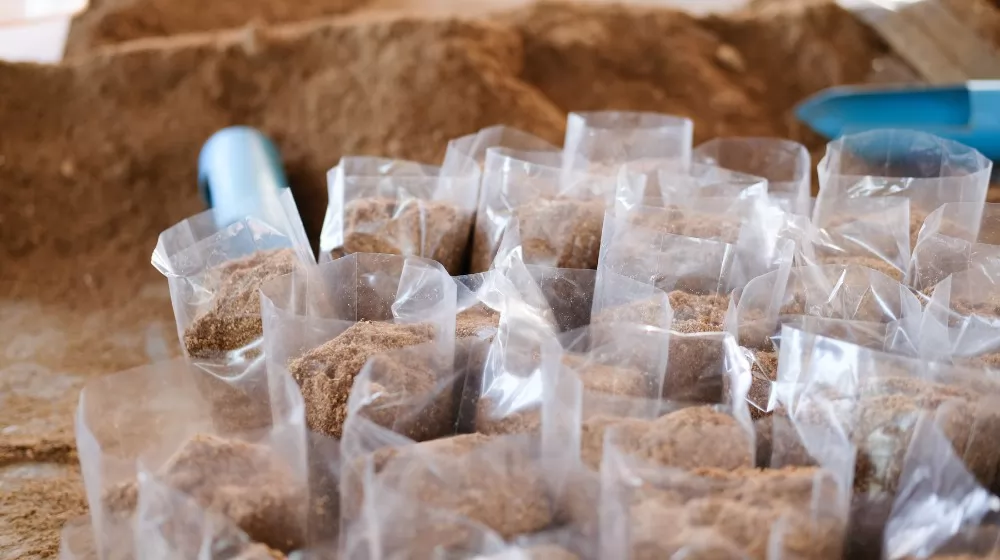
A notable advantage of grow bags over traditional pots is their ease of mobility. This feature is particularly beneficial for gardeners who need to frequently move their plants for various reasons. Let's examine why grow bags are more convenient to move around.
Lightweight Material: The fabric used in grow bags is inherently lighter than the materials used in ceramic or heavy-duty plastic pots. This lightweight nature makes them much easier to handle, especially when the soil and plants are added.
Flexible Design: Unlike rigid pots, fabric pots can slightly adjust their shape. This flexibility allows for easier handling and maneuvering, especially in tight spaces or when needing to fit them into specific areas of your garden or balcony.
Handles for Transportation: Many grow bags come equipped with sturdy handles. These handles are a game-changer when it comes to moving plants, providing a secure and comfortable grip that makes transportation a breeze, whether it's for adjusting to sunlight exposure or rearranging garden layouts.
Space Efficiency: When not in use, grow bags can be emptied, folded, and stored away without taking up much space. This is in stark contrast to traditional pots, which can be cumbersome to store and move when not in use.
The mobility of grow bags offers gardeners flexibility and convenience, making it easier to adapt to changing seasons, light conditions, and spatial needs. This ease of movement is not just a matter of convenience but also contributes to better plant care, allowing for optimal positioning and care throughout the growing season.
While fabric pots, or grow bags, offer several advantages, it's important to acknowledge their shorter lifespan compared to traditional pots. This aspect can influence a gardener's decision when choosing the right type of container for their plants. Let's delve into the factors that contribute to the shorter lifespan of fabric pots and what this means for gardeners.
Material Vulnerability: The fabric material, while advantageous for root health and drainage, is more susceptible to wear and tear than plastic or ceramic. Exposure to sunlight, extreme weather conditions, and regular handling can degrade the fabric over time.
Environmental Factors: Fabric pots are often exposed to a variety of outdoor elements, including UV rays, moisture, and temperature fluctuations. These environmental factors can accelerate the breakdown of the fabric, reducing its durability and lifespan.
Frequent Handling: The ease of moving fabric pots, while a benefit, can also contribute to their quicker deterioration. Regular handling, especially when filled with soil and plants, puts stress on the fabric and seams, leading to potential damage over time.
It's worth noting that the lifespan of fabric pots can vary depending on the quality of the material and the specific conditions they are exposed to. Some higher-quality grow bags are designed to be more durable and can last several growing seasons with proper care.
In summary, while fabric pots offer numerous benefits for plant growth and garden management, their potentially shorter lifespan is a factor to consider. Gardeners should weigh this against the pots' affordability, portability, and positive impact on plant health when making their decision.
An important aspect to consider when using grow bags is their tendency to dry out faster than traditional plastic or ceramic pots. This characteristic can significantly impact watering schedules and overall plant health. Let's explore the reasons behind this and how it affects gardening practices.
Increased Air Flow: The breathable fabric of grow bags allows for greater air circulation around the soil. While this promotes healthy root growth and prevents waterlogging, it also leads to quicker evaporation of moisture from the soil.
Material Porosity: The porous nature of the fabric material used in grow bags means that water can escape not only from the top soil but also through the sides of the bag. This increased surface area for evaporation contributes to the soil drying out more rapidly.
Environmental Factors: External conditions like wind, temperature, and humidity can also affect how quickly water evaporates from fabric pots. In windy or hot climates, for example, you may find that grow bags require more frequent watering.
This characteristic of grow bags necessitates a more attentive watering regime. Gardeners using grow bags need to monitor their plants more closely and adjust their watering schedule accordingly. It's particularly important during hot, dry periods or in windy conditions.
However, this faster drying property can also be an advantage, especially for plants that prefer drier soil or are prone to root rot. It allows for better control over the moisture level in the soil, reducing the risk of overwatering.

An often-overlooked advantage of grow bags is their ability to keep soil cooler compared to traditional plastic or ceramic pots. This feature is particularly beneficial during the warmer months and can significantly impact plant health and growth. Let's delve into how grow bags manage to maintain cooler soil temperatures.
Breathable Fabric: The key to this cooling effect lies in the breathable fabric used in grow bags. Unlike plastic pots that can trap heat, the fabric allows air to flow through the soil, dissipating heat and reducing the overall temperature within the pot.
Moisture Evaporation: Evaporation of moisture from the soil surface and the sides of the grow bags also helps in cooling the soil. This evaporation process is enhanced due to the increased airflow, contributing to a cooler environment for the roots.
Reflective Properties: Some grow bags are made with light-colored or even UV-reflective materials. These colors and materials can reflect sunlight rather than absorbing it, further helping to keep the soil temperature down.
This cooling effect can be particularly advantageous for plants that are sensitive to high temperatures or for gardening in regions with hot climates. Cooler soil can help prevent issues like heat stress and root burn, which can severely impact plant health and yield.
However, it's important for gardeners to remember that while cooler soil can be beneficial, it may also mean that soil in grow bags could take longer to warm up in the spring. This factor should be considered when planning planting schedules and selecting crops.
A distinctive feature of grow bags that sets them apart from traditional pots is their ability to air prune roots. This natural process is crucial for healthy plant growth and can prevent common issues associated with root-bound plants. Let's explore how air pruning works in grow bags and its benefits.
Root-bound conditions occur when a plant's roots run out of space to grow and start circling the inside of the pot. This can lead to stunted growth, nutrient deficiencies, and overall poor plant health. Traditional pots, especially those made of plastic or ceramic, often contribute to this issue due to their impermeable walls that restrict root expansion.
Fabric pots, despite their size, can be considered effectively smaller for the root system. This is because the air pruning process naturally limits the outward growth of roots. The roots grow until they reach the porous fabric, at which point the exposed root tips dehydrate and naturally prune. This process encourages the growth of new, healthy root branches within the pot, utilizing the available space more efficiently.
In grow bags, air pruning primarily occurs at the sides of the bag, where the roots come into contact with the air through the fabric. This exposure to air causes the outermost roots to dry out and stop growing, signaling the plant to produce new root growth within the core of the root system. This natural pruning process prevents the roots from becoming root-bound and promotes a denser, more fibrous root system, which is essential for effective nutrient uptake and overall plant health.
The concept of air pruning in grow bags is revolutionary in gardening, offering a sustainable and effective solution to the challenges posed by traditional potting methods. It not only ensures healthier plant growth but also reduces the need for frequent repotting, making gardening more efficient and enjoyable.
The use of fabric pots in gardening has garnered attention not only from gardeners but also from the scientific community. Research and studies have been conducted to understand the efficacy of fabric pots compared to traditional containers. Let’s delve into the scientific perspective on fabric pots and what research says about their benefits and drawbacks.
Improved Root Health: Scientific studies have consistently shown that fabric pots promote healthier root systems. The air pruning effect, which occurs naturally in fabric pots, leads to a more fibrous root structure. This is beneficial for the plant's nutrient uptake and overall growth, as a healthier root system can absorb water and nutrients more efficiently.
Temperature Regulation: Research indicates that fabric pots offer better temperature regulation for the soil. The breathable fabric allows excess heat to escape, preventing the overheating of roots, which is a common issue in plastic pots, especially under direct sunlight.
Watering Dynamics: Studies also highlight the differences in watering needs. Fabric pots tend to dry out faster due to increased air flow, requiring more frequent watering. However, this can also be an advantage for certain types of plants that prefer drier conditions or are prone to diseases caused by overwatering.
Plant Growth and Yield: Some research suggests that plants grown in fabric pots may experience enhanced growth and potentially higher yields. This is attributed to the healthier root systems and the improved conditions within the soil.
However, it’s important to note that while fabric pots offer several advantages, they might not be the perfect solution for every plant or situation. The scientific community emphasizes the need for gardeners to consider their specific environmental conditions, plant types, and gardening goals when choosing between fabric pots and traditional containers.

The debate between fabric pots and plastic pots is a significant one in the gardening community. Both have their unique advantages and drawbacks, affecting soil health, plant growth, environmental impact, and practical usability. Let’s compare these two types of containers to determine which might be better suited for various gardening needs.
Comparing Root Health: Fabric pots encourage air pruning and prevent root circling, leading to healthier root systems. In contrast, plastic pots can cause roots to circle and become root-bound, potentially hampering plant growth.
Impact on Soil Moisture and Nutrients: Fabric pots offer better drainage and air flow, which can improve soil moisture and nutrient levels. Plastic pots may retain moisture longer but can also lead to waterlogging and nutrient leaching if not properly managed.
Sustainability of Materials: Fabric pots are often made from recycled materials and are biodegradable, making them a more sustainable option. Plastic pots, while reusable, contribute to plastic waste and are less environmentally friendly in terms of production and disposal.
Carbon Footprint of Production: The production of plastic pots generally has a higher carbon footprint compared to fabric pots. The manufacturing process of plastic involves more energy-intensive procedures and raw materials.
Cost Analysis: Fabric pots can be more cost-effective in the long run due to their durability and positive impact on plant health. Plastic pots might be cheaper initially but may require replacement more frequently.
Space Utilization: Fabric pots are more adaptable to space constraints, as they can be easily stored and maneuvered. Plastic pots, while sturdy, take up more space and are less flexible.
Mobility and Ease of Handling: Fabric pots are generally lighter and easier to move, especially when they come with handles. Plastic pots can be heavier and more cumbersome to relocate, particularly when filled with soil and plants.
As we conclude our exploration of grow bags and plastic pots, it's evident that each offers unique benefits to the gardening world. Whether you prioritize environmental sustainability or practical efficiency, your choice can significantly impact your gardening success. Embrace the future of gardening with Linkwin, China's leading manufacturer of Grow Bags and Garden Tools. Discover our innovative products designed for optimal plant health and gardening ease at www.agriculturaltool.com. Join us in cultivating a greener, more sustainable future, one garden at a time.
Read More:
The Ultimate Guide to Planting in Fabric Grow Bags
The Green Haven: Nurturing Growth with Indoor Planting Trays?






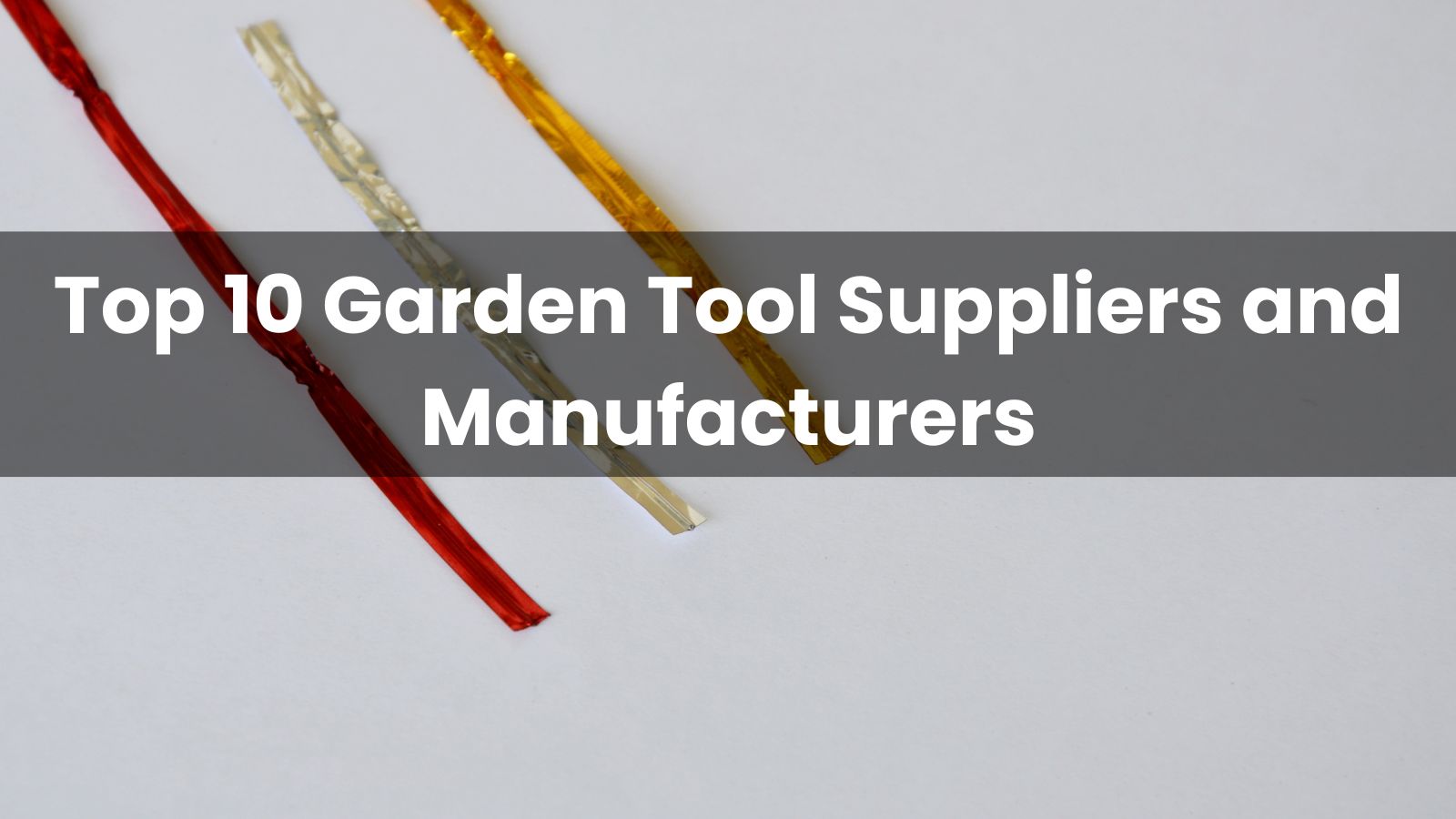

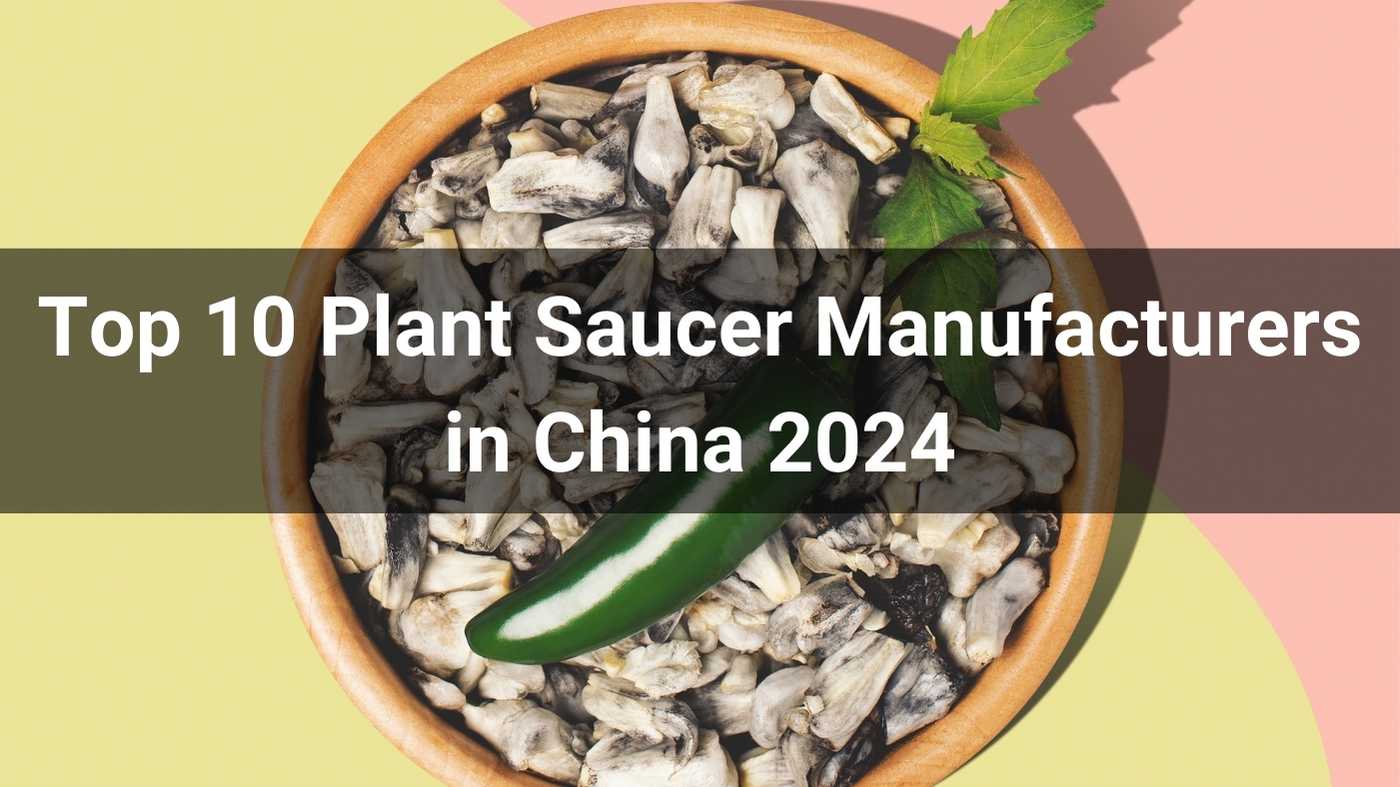


We use cookies to make the website work, to provide advanced features, social media and traffic analysis, and we use analytics and third-party advertising cookies. If you choose to click "Deny All", you will retain the default setting of not allowing the use of cookies or other tracking tools other than technical tools.

